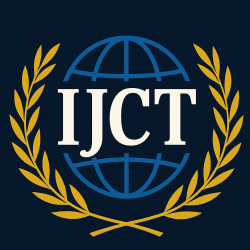
A Comparative Study of Cloud Securityin Public vs. Private Cloud Environments – Volume 12 Issue 5

International Journal of Computer Techniques
ISSN 2394-2231
Volume 12, Issue 5 | Published: September – October 2025
Author
Mohammed Asif Sawant
Table of Contents
ToggleAbstract
Cloud computing is now used by almost every company because it gives flexibility, cost saving, and quick setup. But security is a major issue especially when chosen either public and private clouds. Public clouds are cheap and grow easily nut they are less safe. Private clouds are safe but it cost more. This research tries to find the balance solution by looking at hybrid setup and helps to find out which model give better balanced effective solution. Findings indicate that with correct security tools and policies both models can be easily depending on organizational needs.
Keywords
cloud computing, public cloud, private cloud, hybrid cloud, cloud security, shared responsibilityConclusion
• The four areas which are risks, cost, compliance, and security tools are been studied and looked at public vs private cloud security so it will have better use. • From the findings, no single cloud model is perfect for all organizations. • There are good and bad points in every model it dependence on the company. Public Cloud • For having perfect small businesses public clouds are cheap and flexible. • They allow quick scaling when demand increases. • But they face security risks from human errors like bad settings or access control mistakes. • Most attacks happen because of misconfiguration and weak monitoring. Private Cloud • Private clouds give full control over data and system. • They are best for companies that must follow strict rules like GDPR or HIPAA. • Needs more money and skilled people. • Still it need regular checks and internal security to prevent insider threats and leaks. Hybrid Cloud • Hybrid clouds mix public and private benefits. • We keep important things in private cloud and other things in public cloud. • It makes safer and saves money. • Managing hybrid clouds is hard, so we need automation and constant monitoring. Modern Security Tools • Tools like CSPM, Zero Trust Architecture, and AI threat detection are now necessary. • They help find wrong settings, control access, and stop attacks early. • These tools are very useful when using hybrid cloud systems.
References
[1]E. Ghazaryan, “Comparative Analysis of Cloud Deployment Models: Public, Private, Hybrid, and Multi-Cloud,” International Journal Of Engineering And Computer Science, 2025. [2]D. H. Parekh and R. Sridaran, “An Analysis of Security Challenges in Cloud Computing,” International Journal of Advanced Computer Science and Applications, 2013. [3]D. Dattawala and T. Singh, “A Comparative Analysis of Cloud-Based Information Security Solutions: Evaluating Risks and Benefits,” International Journal of Engineering Applied Science and Management, 2024. [4]M. Lata and V. Kumar, “Cyber security techniques in cloud environment: comparative analysis of public, private and hybrid cloud,” EDPACS, 2025. [5]Thales, “2024 Cloud Security Study – Europe and Middle East Edition,” Thales Report, 2024 [6]J. Roper, “Cloud Deployment Models – Types, Comparison & Examples,” Spacelift Blog, 2024. [7]A. Kumar, “A Comparison of Security Challenges in Public and Private Clouds,” International Journal of Latest Trends in Engineering and Technology, 2014. [8]F. Shirazi, A. Seddighi, and A. Iqbal, “Cloud Computing Security and Privacy: An Empirical Study,” J. Comp. Theo. Nanosci., 2017. [9]SentinelOne, “Private Vs. Public Cloud Security: 10 Key Differences,” SentinelOne Blog, 2025. [10]A. Ismail and E. Siham, “Enhancing Cloud Security: Strategies and Technologies for Protecting Data in Cloud Environments,” International Journal of Applied Mathematics Computational Science and Systems Engineering, 2024. [11]M. Kharma and A. Taweel, “Threat Modeling in Cloud Computing – A Literature Review,” in Ubiquitous Security, Springer, 2023. [12]P. Mell and T. Grance, “The NIST Definition of Cloud Computing,” NIST Special Publication 800-145, Sep. 2011. [13]StrongDM, “Public vs. Private Clouds: What’s the Difference?,” StrongDM Blog, 2024. [14]CDNetworks, “Public Cloud Security vs Private Cloud Security,” CDNetworks Blog, 2024. [15]Check Point Software, “Top Cloud Security Trends in 2025,” Check Point Software Cyber Hub, 2025. [16]B. B. Sehgal, “How AI Impacts Cloud Security,” CrowdStrike Blog, 2025. [17]H. B. Patel and N. Kansara, “Cloud Computing Deployment Models: A Comparative Study,” International Journal of Innovative Research in Computer Science & Technology, 2021. [18]B. Balkin, “NIST Cyber Security Framework – 5 Core Functions Infographic,” CalCom Software Blog, 2025. [19]O. Gierszal and L. Knoll, “Private Cloud vs Public Cloud: How To Choose The Right Cloud Solution,” Brainhub Library, 2025. [20]Shubham, “Private Cloud in 2025: Trends, Technologies, and Best Practices,” Cloudian Guide, 2025. [21]Google Cloud, “What is Zero Trust?,” Google Cloud Blog, 2025. S. Moore, “Cloud Security: Challenges, Solutions, and 6 Critical Best Practices,” Exabeam Explainer, 2025.
IJCT Important Links
© 2025 International Journal of Computer Techniques (IJCT).









